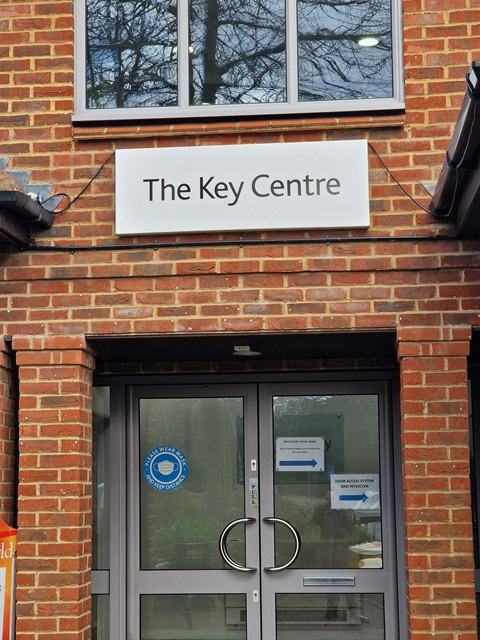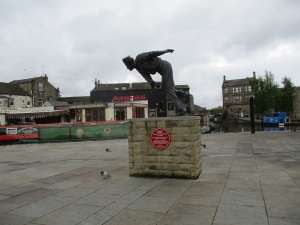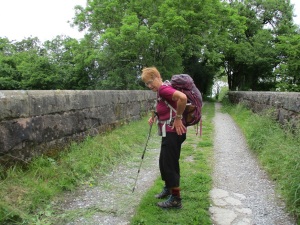Elvetham Heath is a relatively new housing estate to the North West of Fleet. It comprises about 2000 dwellings with building work starting in 1999 and it was completed just 10 years later. To the north of the estate is the M3, to the south the main railway line to London. Despite these apparent ‘noisy neighbours’ Elvetham Heath is very pleasant, and surprisingly quiet.

In the centre of the estate is a supermarket, a village hall, a school, a church, a pub and many other facilities needed to support its 5000+ population.
The central car park is free for a limited time, but we thought (and we were right), our caching trip would be longer than the free car parking would permit, so we parked some distance from the centre in a residential road.
We planned on locating a cache on our way to the estate’s centre, attempt the multicaches set near the middle and return by visiting a few more caches.
The first cache we attempted was a puzzle cache based on the TV series ‘Death in Paradise’. We thoroughly enjoy this series, but as it turned out the puzzle didn’t require expert knowledge of the show. A swift google search, some straightforward calculations and the final coordinates were discovered. The cache was hidden on a long, straight track running parallel to the railway.
The cache was a well crafted ‘bird-box’ container hidden just behind rhododendron bushes.
The path was surprisingly empty, we only saw a couple of dog walkers on our 10-15 minute walk to the village centre. We emerged from the quiet, tree-covered path to face the main centre. The supermarket car park was busy, people were crossing roads on errands… the quietness we had experienced had melted into a hubbub of people!



We had two multi-caches to find. We decided to collect the information for both caches, and then plan an optimal route to find the containers.
The first multi-cache entitled ‘My First Multi-cache’ required us to write down numbers from a parking restriction sign. The second multicache, part of the village hall series, required us to use digits from a phone number.
Both caches were in opposite directions! Before we set off to find the first cache, we found a simple cache close to the telephone box and post box – part of the Fine Pair Series. We first found a Fine Pair cache back in 2013 – that cache was number 64 in the National series – this cache was number 1435.


Interestingly the post box was an old George VI post box, so must have either been here 60 years ago, when the estate was a wooded area, or moved from another location. In keeping with the time-travelling nature of the post-box, it was topped with a Dalek, while the no-longer-used phone box, was a frostproof plant container!
With the Fine Pair cache, found, we headed North to find one of the multicaches. The final was a some distance away, and the twisty-turny nature of the roads and pavements, meant it took some time to reach Ground Zero. We were glad for a quick find, as the hiding place was very exposed in front of several houses, on a road junction.
We returned to the village centre and headed a little way south, picking up the other multi-cache. Again another street sign was the host and a hint that confused Mrs Hg137, who seemingly never learnt the orientation of compass points based on the phrase.. “Never Eat Shredded Wheat” !
Time was pressing, and we limited our searching to one further cache. This was close to the car, but, at the time, many of roads and pavements were being dug up, and non-optimal alternatives meant we took longer than expected to arrive at GZ. The hint was magnetic, and it took us a few minutes to find the correct metal object, but once we did we had our largest container of the day.
There are still a few caches in the Elvetham Heath estate, which no doubt we will collect at some other time.
































































































































